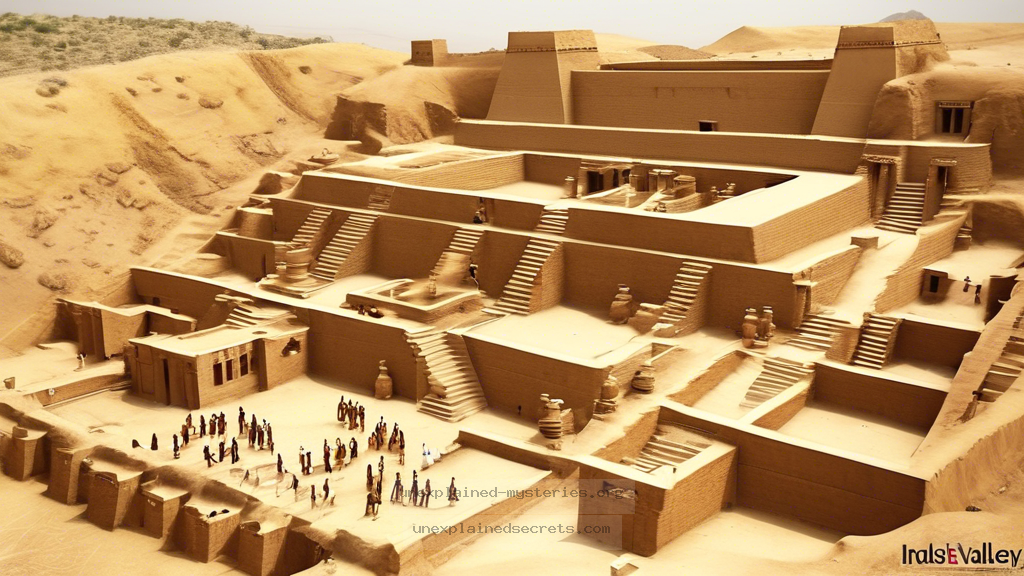What Happened to the Advanced Civilization of the Indus Valley?
What Happened to the Advanced Civilization of the Indus Valley?
The Indus Valley Civilization, one of the world’s earliest urban cultures, flourished around 2500 BCE in what is now Pakistan and northwest India. Its sudden decline around 1900 BCE remains one of the great mysteries of ancient history. This question matters not only for understanding the past but also for shedding light on the complexities of civilization itself, including how societies can rise and fall due to various factors. In this blog post, we will explore the intriguing elements surrounding the Indus Valley Civilization’s disappearance, examining historical context, core theories, practical implications, and ongoing research.
Historical Context of the Indus Valley Civilization
The Indus Valley Civilization, also known as the Harappan Civilization, was notable for its advanced urban planning, architecture, and social organization. Cities like Harappa and Mohenjo-Daro featured grid layouts, sophisticated drainage systems, and standardized weights and measures. The civilization existed in a fertile floodplain, supported by the Indus River, which provided ample resources for agriculture and trade.
At its zenith, the civilization was home to millions of people and engaged in extensive trade networks stretching as far as Mesopotamia. The use of seals for commerce indicates a complex economic system. However, by around 1900 BCE, evidence suggests that many urban centers were abandoned, leading to questions about the causes behind this dramatic decline.
Core Theories on the Decline
Several theories have been proposed to explain the decline of the Indus Valley Civilization, ranging from environmental changes to social upheaval. Here are some of the most prominent theories:
- Climate Change: Evidence suggests significant shifts in climate, including reduced monsoon rains, which could have led to agricultural failures.
- River Dynamics: The Indus River is known to have changed its course over millennia. This could have drastically affected irrigation and agriculture.
- Invasions and Warfare: Some historians propose that invasions by nomadic tribes may have led to the civilization’s downfall.
- Internal Social Discontent: Increased population density might have created social tensions and conflicts, leading to the civilization’s fragmentation.
Practical Implications of Decline
The decline of the Indus Valley Civilization serves as a cautionary tale about the fragility of advanced societies. It underscores how environmental, social, and economic factors can intertwine to create a perfect storm for collapse. Understanding these dynamics can inform modern societies about sustainability and resilience in the face of climate change and resource depletion.
For instance, current climate models project scenarios that could lead to similar societal stresses. Cities should consider the lessons learned from the Harappan Civilization to build more resilient infrastructures and sustainable agricultural practices. 🌱
Alternative Perspectives on the Decline
While climate change and ecological factors are widely discussed, alternative perspectives argue against a singular explanation. Some researchers advocate for a multi-causal approach, suggesting that a combination of factors led to the decline. For example, it could be argued that while climate change initiated agricultural decline, social dynamics or economic factors exacerbated the situation.
Others suggest that the decline was not a sudden collapse but rather a gradual transformation, with populations moving to surrounding areas and continuing their cultural practices. This perspective emphasizes the adaptability of human societies rather than their failure. 🔄
Common Misconceptions and Clarifications
Many misconceptions surround the Indus Valley Civilization and its decline. One common myth is that the civilization completely disappeared. In reality, archaeological evidence shows that many of its cultural aspects persisted in the region, influencing subsequent cultures.
Another misconception is that the civilization was uniformly advanced. While cities like Mohenjo-Daro displayed remarkable planning, there were significant variations across the region. Rural communities may have had different levels of technological development and social organization.
Best Practices for Investigation and Study
Studying ancient civilizations like the Indus Valley requires a multidisciplinary approach. Archaeologists, historians, and environmental scientists must collaborate to build a comprehensive understanding.
- Field Research: Continued excavations can unearth new artifacts and structures that provide insights into daily life.
- Interdisciplinary Collaboration: Combining expertise in archaeology, anthropology, and climate science can yield richer interpretations of data.
- Technological Applications: Utilizing technologies like satellite imagery and geographic information systems (GIS) can help map ancient landscapes and understand urban planning.
Future Developments and Ongoing Research
Research on the Indus Valley Civilization is ongoing, with new discoveries continually reshaping our understanding. Recent advancements in technology, such as DNA analysis and remote sensing, hold promise for revealing more about the people who inhabited this ancient civilization.
Moreover, as climate change becomes an increasingly pressing issue, studies of ancient societies like the Indus Valley may offer valuable lessons on resilience and adaptation. The potential to uncover more about their agricultural practices, social structures, and trade networks is an exciting frontier in historical research. 🚀
Conclusion
The mystery surrounding the decline of the Indus Valley Civilization highlights the complexities of ancient societies and the various factors that can lead to their rise and fall. From climate change to social dynamics, the interplay of multiple elements paints a rich tableau of historical inquiry. By learning from these ancient cultures, modern societies can strive for sustainability and resilience in an ever-changing world.
As we continue to unravel the mysteries of the past, the story of the Indus Valley serves as a reminder of our shared humanity and the lessons history can provide. The quest for understanding remains open, inviting new discoveries and interpretations. 🌍
Other Articles
Recent Posts
- What Happened to Flight MH370? The Conspiracy Theories That Still Haunt Us
- What Secrets Lurk Within the Walls of the Infamous Trans-Allegheny Lunatic Asylum?
- What Evidence Supports the Existence of Bigfoot in the Pacific Northwest?
- What Happened to the Indus Valley Civilization? Unraveling the Mysteries of Ancient Urban Life
- Can Telepathy Be Scientifically Proven Through Laboratory Evidence?







